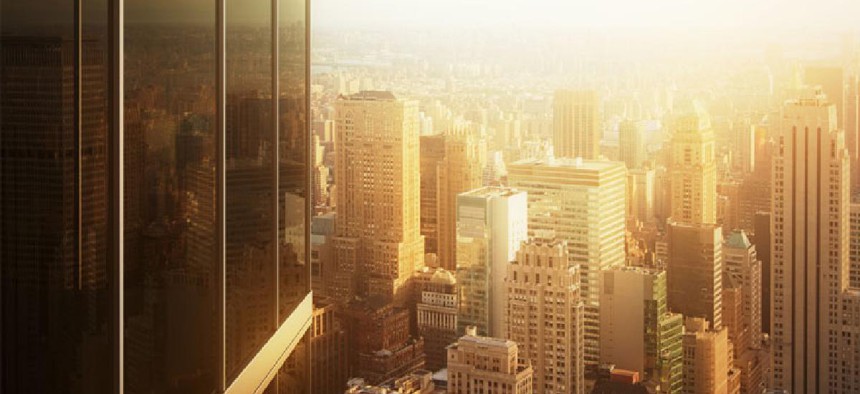NYC eyes drones for building inspections

New York City’s Department of Buildings has found that experienced building safety inspectors using drones can conduct enhanced visual reviews of building façade with greater efficiency.
New York City’s Department of Buildings has found that experienced building safety inspectors using drones can conduct enhanced visual reviews of building façade with greater efficiency. That’s according to a new report about the potential benefits of using unmanned aircraft systems in the city to conduct safety inspections.
The Department found that when UAS offer advantages for collecting visual data. Equipped with video cameras and lidar as well as thermal imaging, photogrammetry and location software, drones can gather a significant amount of detailed visual information. Moreover, the UAS pilots can capture images at angles nearly impossible to access using present-day methods of inspection. Drones would also alleviate some of the challenges with inspecting larger buildings and decrease the need for manpower.
However, the report conceded that certain physical examinations, such as sounding and probes, still needed to be conducted by qualified professionals for a full inspection. It recommended additional study in this area to gain a clearer understanding of how emerging UAS technologies could improve the efficiency and safety of such compulsory inspections.
This includes gathering more information on the time and cost savings and even the types of façade deficiencies that are most easily identifiable by drones. For instance, it may be more difficult to recognize a displacement or bulges from a photo or video than to spot a crack in the masonry.
Currently, only approved government agencies can legally fly drones in New York City -- and only during specific emergency response situations. This restriction has caused the city to fall behind others, according to Carlo A. Scissura, president and CEO of the New York Building Congress.
“We’re seeing drones, artificial intelligence and other innovations make design and construction more efficient, stronger and safer. New York City has always been innovative, but our outdated codes and rules have left us behind while other cities benefit from cutting-edge technologies.” he said.
NEXT STORY: VA exploring emerging health care tech





